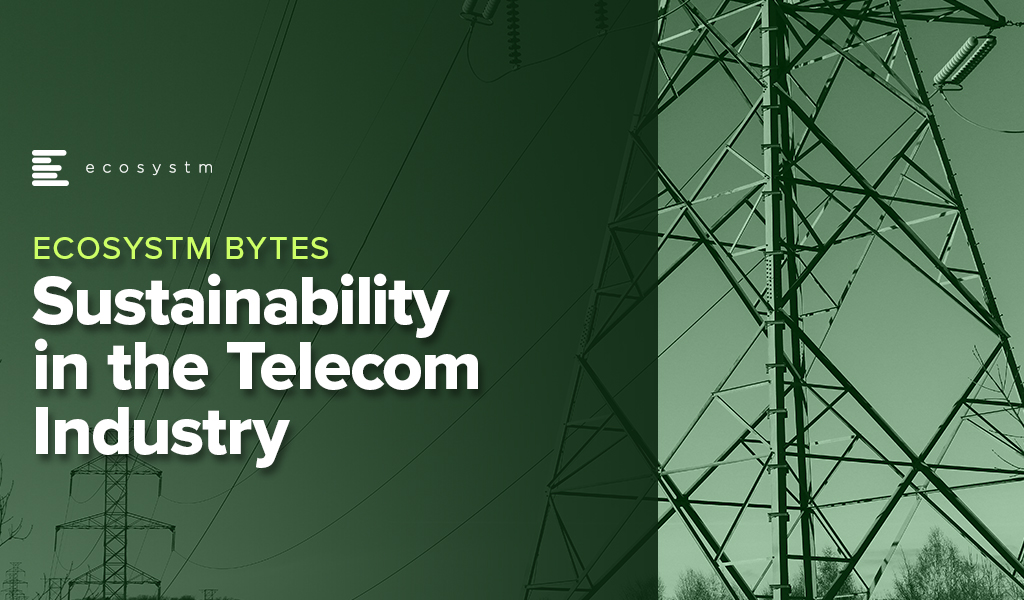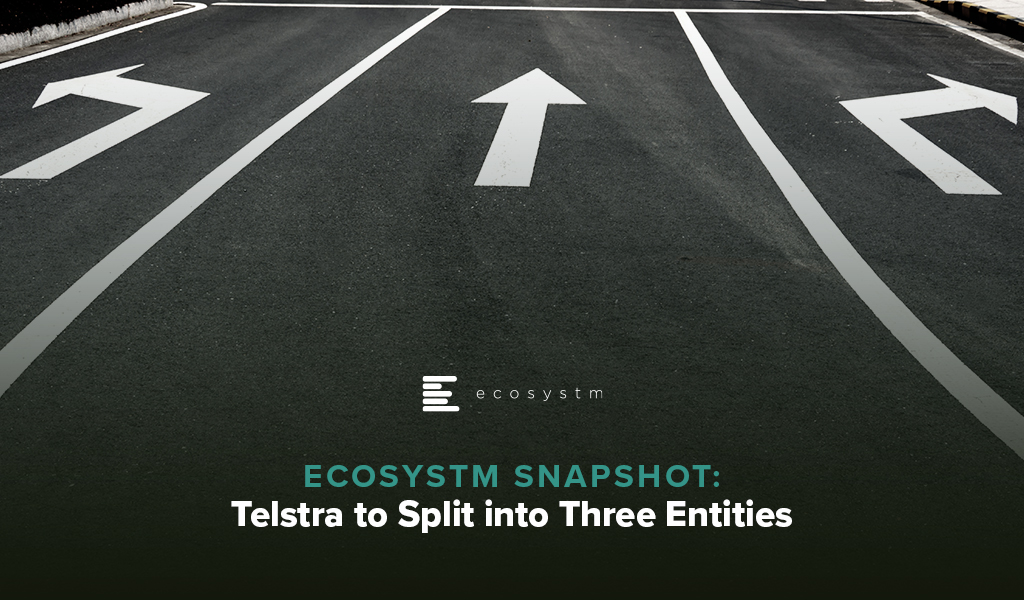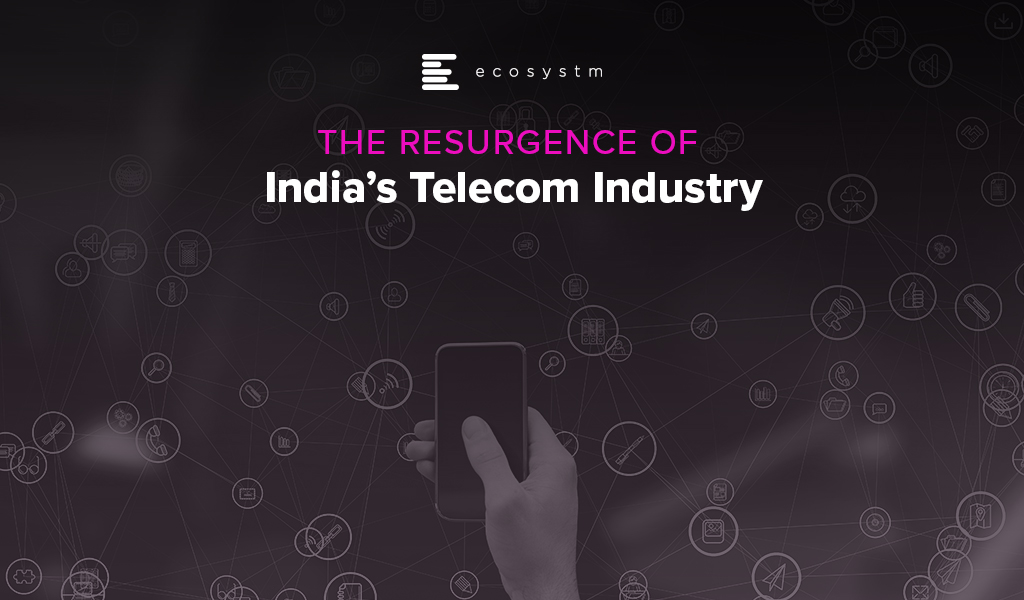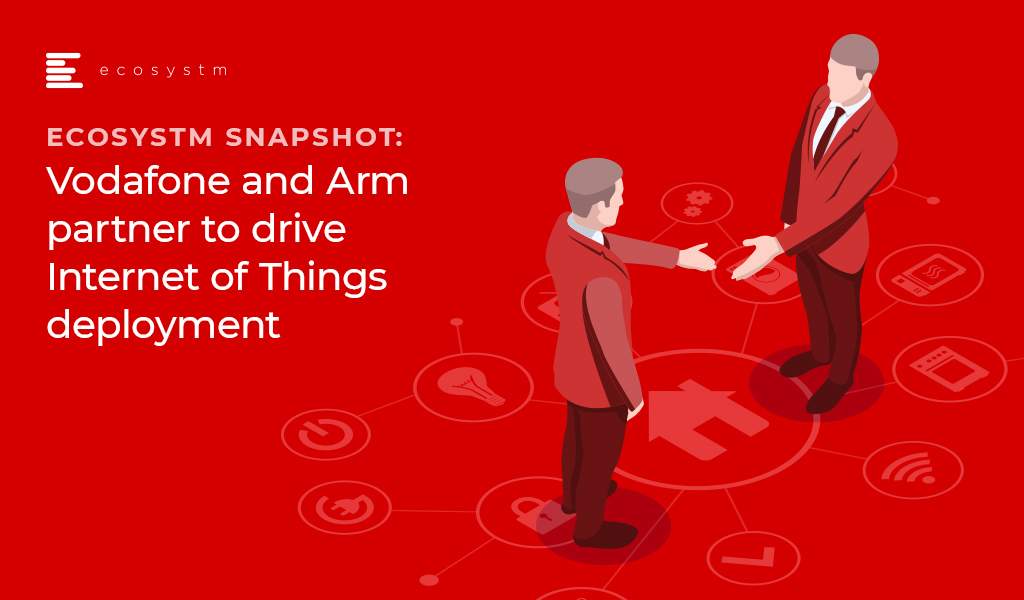Telecom companies’ spending on utilities (electricity, fuel, and water) amounted to an estimated 5.2% of OpEx (excluding depreciation and amortisation) in 2020, a bit up from the previous three years. There is modest evidence that 5G adoption is driving costs higher. Early adopters, such as China Mobile, Ooredoo, Swisscom, Telecom Italia, and all three of Korea’s big telecom providers (SKT, KT, and LG Uplus) saw increases in utilities spend in 2020. Increases generally weren’t big but serve as a good reminder that telecom providers will need to seek out energy efficient equipment, software, and network architectures as 5G penetration grows.
Telecom providers also need to rise to the challenge of truly serving as enablers of sustainability. Rather than just viewing energy as a cost centre, they should work with customers and partners to move rapidly towards green energy and reductions in usage.
Some providers are already on this path, but not nearly enough.
At the COP26 there was a strong focus on collective action aimed at curtailing climate change trends. It is all the more important for private companies to take voluntary action. Unfortunately, they’ll only do that if they get public credit for such actions, or if the changes turn out to save money.
Telecom providers have a role to play here. They have an intimate relationship with millions of customers, and an understanding of how their behavior impacts energy usage. It’s time for them to start monetising the insights, help their customers decrease consumption, save cash and position themselves as climate friendly. Recent offerings from European telecoms such as KPN, Swisscom and Vodafone point in the right direction.
Click here to download Sustainability in the Telecom Industry as a PDF

Telstra, Australia’s leading telecom provider has revealed its plans to split into 3 different units which would operate under the umbrella of the Telstra Group. The restructuring – scheduled to be completed by 2021 – is said to be the telecom giant’s biggest restructuring since 1997. The primary reason behind the move appears to be to spin off its infrastructure assets to realise their full value as competition intensifies.
In 2018, the Telstra2022 plan defined a four-pillar strategy to improve business, network superiority, cost improvements and respond to market dynamics for the next three years including the establishment of InfraCo and Global Business Services. Telstra established its standalone infrastructure unit, Telstra InfraCo to hold its fixed network assets. As a part of its recent announcement, Telstra’s infrastructure business InfraCo will split into two units – InfraCo Fixed which will run and manage Telstra’s physical infrastructure assets including data centres, ducts, fibres, undersea cables, and exchanges; and InfraCo Towers which will own and operate Telstra’s mobile towers and infrastructure. Meanwhile, the third unit ServeCo will focus on products and services for the consumer and retail businesses. The company is also investigating ways to push into renewable energy, with plans to exploit its renewable energy investments to re-sell cheaper energy to its customers.
This restructure, should it go ahead as described, is likely to be the biggest legacy that the current CEO, Andy Penn, leaves on the business. Recent CEOs have left a significant legacy on Telstra. Sol Trujillo – who admittedly had a rocky relationship with the Australian Government, which culminated in the conception of the National Broadband Network (NBN) – drove significant changes in Telstra; rationalising mobile and fixed network investments, driving focus back into the business and building an economically rational business. David Thodey was the great peacemaker, driving pride back into the Telstra staff and customers; he turned Telstra into one of the most customer-centric businesses in Australia in his time, laying the foundation for its ongoing success. Andy Penn has made some significant changes to Telstra, further reducing the cost base to turn it into a more competitive business – but until now, he has not significantly transformed the core business.
This changes now. Telstra ServeCo will build on the customer-obsessed culture of the Telstra sales and service business – one that consistently scores above market average for NPS in both the business/enterprise and the consumer markets. One can even envision a day in the future where ServeCo will be in a position to sell the best network solutions and services in Australia – some of which might not even be owned or controlled by InfraCo. It already does that with the NBN – this may extend to reselling other telecom services too.
InfraCo Fixed will build on the strong engineering legacy that Telstra still has – and will give it the chance to flourish – and not be dictated by customer buying cycles. Ideally investment cycles can be separated from direct customer revenue, and the company can rebuild the network lead that it has traditionally experienced, but which has been eroded over the past 3-4 years (in mobile by Optus and in fixed telecoms by NBN).
InfraCo Towers should be well-positioned to become the core tower provider in Australia. This business makes the most sense to spin off in the medium term. The buildout of multiple – nearly identical – tower networks by the three major 4/5G providers is wasteful and inefficient. 5G in particular, requires a very different tower footprint than 3G or 4G – so having a single provider of shared tower infrastructure will reduce costs for all telecom providers while creating a healthy business for shareholders. As an independent provider of towers, InfraCo Towers should always be the most affordable option – Optus, Telstra and Vodafone would be foolish to attempt to replicate and manage their own similar tower infrastructure.
The NBN-Telstra Dynamics
While Telstra dominates the Australian telecommunications market, their business is also under pressure due to the state-owned NBN. In 2019, Communications Minister Paul Fletcher ruled out selling the NBN to Telstra. However, the new structure has likely been designed with this in mind – with perhaps the option to spin off the InfraCo Fixed unit and merge this with a privatised NBN or perhaps to even the separation of the business units enough to satisfy a future government of the merits of selling NBN to Telstra and merging it with the InfraCo Fixed unit. The question surely needs to be asked what the difference is between a private business with a monopoly on home broadband access and Telstra having that monopoly?
This restructure will help Telstra build a telco for the next ten years. One where agility will be core to its success. The challenge – like with any big transformation – will be to take the employees and the customers on that journey. Employees need to believe that this structure is the right one and that their skills are required and relevant. Customers need to see benefits from this restructure too – ideally, they will see that the service promise of Telstra is delivered in the network and capabilities. Hopefully, they will see a stronger Telstra that can continue to drive the levels of innovation and investment that digitally savvy customers demand.

AWS has been busy this year moving beyond its stronghold of public cloud to bring infrastructure closer to the enterprise and ultimately to where the end user needs computing most. The global availability of AWS Outposts, essentially AWS on prem, the launch of AWS Wavelength, edge computing embedded in 5G networks, and the extension of the AWS Snow Family of edge devices, have all combined to create a compelling hybrid cloud story. This evolution in AWS’ strategy has required a maturing of its partner ecosystem, building alliances with telcos, co-location providers, and integrators that are all still trying to cement their roles in the hybrid cloud space.
Outposts: The AWS Vision of Hybrid Could
Outposts launched late last year with availability extended to many mature countries in January 2020, in addition to India, Malaysia, New Zealand, Taiwan, Thailand, Israel, Brazil, and Mexico in June. The plug and play system delivers AWS compute and storage from the organisation’s own data centre with a rack that requires only power and network access. The system is managed with the same tools and APIs used in public AWS regions, providing a single hybrid cloud management console. Outposts is targeted primarily at the enterprise space, with the cheapest development and testing units coming in at $7-8k monthly or around $250-280k upfront, depending on the country. Other higher-end configurations include general purpose, compute optimised, graphics optimised, memory optimised, and storage optimised. Monthly installments attract a 10-15% premium over upfront payments.
The launch of hybrid cloud solutions by the major cloud providers and containerised services that allow workloads to be deployed in public and private environments will ensure enterprises are willing to continue their cloud journeys. Security concerns and data residency regulations have prevented many organisations from shifting sensitive workloads to the cloud. Moreover, as industries launch new customer-facing digital services or transform their manufacturing systems, latency will become a concern for some workloads. Hybrid cloud addresses each of these issues by employing either public or private resources depending on the data, location, or capacity needs.
AWS Outposts has two variants, namely Native AWS and VMware Cloud on AWS. Organisations already heavily invested in the AWS ecosystem will likely choose Native AWS and use Outposts as a means of migrating further workloads that require an on-prem environment over to a hybrid cloud environment. More traditional organisations, such as banks, may select the VMware Cloud on AWS variant as a means of retaining the same operational experience that they are accustomed to in their existing VMware environments today.
AWS will rely heavily on its network of enterprise partners for sales, management, and maintenance services for Outposts. AWS partners like Accenture, HCL, TCS, Deloitte, DXC, NTT Data, and Rackspace have all shifted in recent years to deliver the full stack from infrastructure to application services and now have a ready-made hybrid cloud platform to migrate on to. AWS is also in the process of recruiting co-location partners to serve Outposts from third-party data centres, providing another option that enterprises are familiar with. This will likely come as welcomed news for co-location providers that have been fighting uphill against AWS.
Wavelength: Embedding Cloud in 5G Networks
Another major announcement in AWS’s drive towards hybrid cloud and edge computing was the general availability of Wavelength in August. This service embeds AWS into the data centres of 5G network operators to reduce latency and bandwidth transmission. Data for applications residing in Wavelength Zones is not required to leave the 5G network. AWS is looking to attract mobile operators, who previously might have viewed it as a competitor while the public cloud space was more fragmented and open to telcos. These partnerships are another example of AWS expanding its ecosystem. Current Wavelength partners are Verizon, Vodafone Business, KDDI, and SK Telecom. With their own take on edge services, Microsoft has signed up the likes of Telstra and NTT Communications, while Google has enlisted AT&T and Telefónica. Edge computing in 5G networks will be the next battleground for cloud supremacy.
On a smaller scale, AWS has released new additions to its Snow Family of edge computing devices. AWS Snowcone is a compact, rugged computing device designed to process data on the network edge where cloud services may be insufficient. The processed data can then be uploaded to the cloud either through a network connection or by physically shipping the device to AWS. The convergence of IT and OT will drive the need for these edge devices in remote locations, such as mines and farms and in mobile environments for the healthcare and transportation industries.
Competitive Strategies
Openness will become a critical difference between how cloud platform providers approach hybrid cloud and edge computing. While AWS is certainly extending its ecosystem to include partners that it previously would have viewed as rivals, as the dominant player, it will be less compelled to open up to its largest competitors. If it can control the full system from ultraportable device, to $1M server rack, to cloud management console, it can potentially deliver a better experience for clients. Conversely, the likes of Microsoft, Google, and IBM, all need to be willing to provide whichever service the client desires, whether that is an end-to-end solution, management of a competitor’s cloud service, or an OEM’s hardware.

The telecom industry in India was in a pretty tight spot due to various challenges led by the Adjusted Gross Revenue (AGR) contention. AGR is a fee-sharing mechanism between the Government and the telecom providers who shifted to ‘revenue-sharing fee’ model in 1999, from the ‘fixed license fee’ model. Telecom providers are supposed to share a percentage of their AGR with the Government. While the government says that AGR includes all revenues from both telecom as well as non-telecom services, the operators contend that it should include only the revenue from core services. While the legal proceedings continue, India’s telecom industry continued facing other challenges such as one of the lowest ARPUs in the world and intense competition.
However, COVID-19 has given the industry a boost, changing the market dynamics and due to the increased interests of global investors. In his report, The New Normal for Telecom Providers in Southeast Asia, Ecosystm Principal Advisor, Shamir Amanullah talks about how the telecom sector has fast evolved as the backbone of business and social interactions as the adoption of applications such as video conferencing and collaborative tools surge. Streaming services such as Netflix have become the go-to source for entertainment, putting the telecom sector in the spotlight today.
India’s monthly active internet user base is estimated to touch 639 million by the end of December, thanks to the COVID-19-induced measures that have forced people to stay indoors. Currently estimated at 574 million, the number of monthly active internet users has grown 24% over that of 2019, indicating an overall penetration of 41% last year. Further, It is estimated that India will have more than 907 million internet users by 2023, accounting for nearly 64% of the population. There are also around 71 million children aged 5-11 years, who go online using devices of family members exhibiting high future digital adoption in the Gen Z.
India’s rural areas are driving the country’s digital revolution, with a 45% growth in internet penetration in 2019 as compared to 11% in urban India. Rural India has an estimated 264 million internet users and is expected to reach 304 million in 2020. Local language content and video drive the internet boom in rural India, with a 250% rise in penetration in the last four years. Mobile is the device of choice for 100% of active users to browse the internet.
Global Interest in the Indian Market
Reliance Jio
Jio Platforms, a subsidiary of Reliance Industries (India’s most valued firm) has raised an estimate of USD 20.2 billion in the past four months from 13 investors by selling about 33% stake in the firm. To put this into context, India’s entire start-up ecosystem raised USD 14.5 billion last year! Besides Google and Facebook, the list of investors includes Qualcomm Investment Ventures, Intel Capital, KKR, TPG, General Atlantic, Silver Lake, L Catterton, Vista Equity Partners, the Abu Dhabi Investment Authority and Saudi Arabia’s Public Investment Fund.
Google’s new investment gives Jio Platforms an equity valuation of USD 58 billion. The investment today from Google is one of the rare instances when it has joined its global rival Facebook in backing a firm. Google and Reliance Jio Platforms will work on a customised version of the Android operating system to develop low-cost, entry-level smartphones to serve the next hundreds of millions of users, according to Mukesh Ambani, Chairman and MD of Reliance Industries. These phones will support Google Play and future wireless standard 5G, he said.
Jio is increasing its focus on the development of areas such as digital services, education, healthcare and entertainment that can support economic growth and social inclusion at a critical time for the economy. At the Reliance Annual General meet, it was announced that Jio has developed a complete 5G solution from scratch that will enable us the launch of a world-class 5G service in India. Jio also revealed that the company is developing Jio TV Plus, Jio Glass, and more.
With an estimated 387 million subscribers as on 31st March 2020 making them the largest in the country, Jio Platforms provides telecom, broadband, and digital content services. Leveraging advanced technologies like Big Data Analytics, AI, IoT, Augmented and Mixed Reality, and Blockchain, this platform is focused on providing affordable internet connectivity with the content to match.
Bharti Airtel
Bharti Telecom, the promoter of Bharti Airtel, has sold a 2.75% stake in the telecom operator for an estimated USD 1.15 billion in May 2020 to a healthy mix of investors – long-only and hedge fund – across Asia, Europe and the US. The promoter entity will use the proceeds of the stake sale to pare debt and become a “debt-free company”.
It was reported that Amazon is in early-stage talks to buy a stake worth USD 2 billion in Bharti Airtel. This translates to a 5% stake based on the current market valuation of the telecom operator. There have also been conversations about the possibility of an agreement on a commercial transaction where Airtel would offer Amazon’s products at cheaper rates. However, Bharti Airtel has clarified that it works with digital and OTT platforms from time-to-time but has no other activity to report.
Airtel has also shared plans to integrate technology and telecom to build a digital platform to take on Jio’s ambitions of evolving into a tech and consumer company. To scale up its digital platforms business, Airtel has been betting on four pillars: data, distribution, payments, and network.
Bharti Airtel also announced it has partnered with Verizon to launch the BlueJeans video-conferencing service in India to serve business customers in the world’s second-largest internet market. They have an estimated 328 million subscribers as on 31st March 2020 making them the 2nd largest in the country.
The Third Player
Vodafone Idea Limited
Vodafone has an estimated 319 million subscribers as on 31st March 2020 making them the 3rd largest telecom provider in the country. There was unvalidated news that Google had shown interest in Vodafone but that does not seem relevant now given their investment in Jio.
The AGR case remains a significant factor for the telecom sector, particularly for Vodafone given their precarious financial position.
However, in recent times, their ARPU is expected to increase by over 40% from USD 1.23 to USD 1.88, through increased pricing. The stock market is responding positively to Vodafone with the stock almost doubling in the last 1 month

While Vodafone remains one of the leading global telecommunications providers, they face the need to transform their services and reach out to a wider audience. The customer base of a typical telecom provider is shifting, and they can no longer afford to just focus on consumers and need to include enterprises in their go-to-market strategy. Beyond the usual offerings of connectivity and mobile plans, Vodafone Business has solutions for Unified Communications, IoT and Cloud, to help grow their enterprise customer base. Ecosystm Principal Advisor, Tim Sheedy says, “Vodafone is one of the most successful telecom providers in the business space. Vodafone Business already represents around 30% of the Vodafone Group revenue, and unlike most in the telecommunications sector, they are showing growth (albeit moderate!).”
The Role of Telecom Providers in the Cybersecurity Market
An area where enterprises continue to need guidance and support is cybersecurity. The results of the UK Government’s Cyber Security Breaches Survey 2019 found that 32% of UK businesses had experienced a cyber-attack in the previous 12 months. More than a third of UK organisations have made changes in their cyber policies because of the GDPR – a majority focusing on policies first. It is not surprising therefore that Vodafone should identify cybersecurity as the next area of focus for their enterprise offerings.
Sheedy says, ”Cybersecurity services are one of the fastest-growing areas in technology. But because of this, it is a also a crowded market with everyone – from the big telecom providers, IT services providers, big audit firms, mid-sized technology providers down to the smaller cybersecurity experts – playing for this growing spend. It can, however, be argued that telecom providers have some of the deepest experience in cybersecurity and managing the risks – their networks are probably the most targeted by hackers and malicious actors. Telecom providers have massive teams just to stop threats from one or two countries. With all the work they do to protect their own network, they should have the skills to help protect the networks and assets of their clients.”
Ecosystm Principal Advisor, Alex Woerndle concurs, “Telecom providers are perfectly positioned to transition into managed security service providers (MSSPs). They already have the experience in providing a range of managed services, the ability to scale to support clients and some ready-made expertise internally in their in-house cybersecurity capabilities.”
Vodafone’s Foray into Cybersecurity
Vodafone Cyber Enhanced focuses on selected cybersecurity areas – threat analysis and intelligence, managed firewall and managed security services. The global Ecosystm Cybersecurity study finds that the solutions that organisations will invest in most in 2020 are Security Operations (SecOps) & Incident Response (by a third of global organisations) and Threat Analysis & Intelligence (by 20% of global organisations).
Commenting on the areas Vodafone is focusing on, Woerndle says, “Threat analysis and intelligence is where a lot of established SecOps providers and MSSPs are really focusing now. Previously it was simply a matter of monitoring alerts and reporting. Businesses and in-house security teams are now seeking more proactive assistance in searching for threats, before they become attacks. The challenge they face is catching up – effectively jumping from just being another SecOps centre (SOC) monitoring and reporting alerts, to matching the more mature SOCs with proactive threat intelligence to help clients mitigate before an attack is launched. This takes time, as it needs maturity of the SOC and the team, and also data, which established providers have accrued plenty of, over an extended period. While a managed firewall is not really a new service, it makes some sense to couple it with other managed security services to deliver a broader program. Vodafone is absolutely targeting the areas that businesses are looking into presently.”
Woerndle adds, “MSSPs will be crucial to the security sector moving forward. There has been a rapid growth of vendor solutions creating a very confusing market for tech buyers. This is coupled with a tight labour market for skilled people who can manage the tools. It is not surprising , therefore, that 86% of organisations across the world will look to engage with an MSSP when deploying a cybersecurity solution, according to Ecosystm research.”
Sheedy sees an opportunity for Vodafone to go global with their cybersecurity capabilities. “If Vodafone can compete with the bigger players (and perhaps partner with or complement the offerings of the smaller ones), then they should find a significant opportunity, especially within their larger clients – particularly as they move into the software-defined networking space. However, given the confusion around cybersecurity, they should expand their focus beyond larger enterprises to businesses over about 100 employees. As one of the largest global telecom providers, with one of the largest networks, they can be an important player in the cybersecurity space – growing the spend in their business clients. And while this is a UK play for now, one assumes that they will look to expand across their operating countries as Vodafone Cyber Enhanced gains traction.”
Vodafone and Arm announced a strategic agreement at MWC19 to work on simplifying IoT services and reduce the costs confronted by the organisations on the implementation of IoT.
The Vodafone-Arm agreement expands on the previous collaboration which was on integrated SIM (iSIM) technology, a system on chip(SOC) design which can be reprogrammed with respect to the requirements. The iSIM allows customers to remotely provision and manage IoT devices across the globe which proposes reduced complexities and offers significant cost reduction.
To carry on the existing relationships this agreement is expected to bring Vodafone’s IoT global platform and Arm’s IoT software services to offer organisations a world of connected systems. This characterises a major initiative enabling a wide ecosystem of manufacturers to tap into the potential of trillions of connected devices.
Speaking on the subject, Ecosystm’s Executive Analyst, Vernon Turner thinks that “this announcement will help customers who look to and need a cellular-based IoT solution. Traditionally, mobile devices require a physical process to change their SIM (Subscriber Identity Module) card when there is a change of ownership or carrier, but in a world of trillions of connected devices, this is just not practical.”
Arm’s announcement of its iSIM is the latest in a series of announcements to resolve the size, cost, and scalability of SIM cards. SIM cards are critical for secure identity so the challenge has been to create a cost-effective IoT System On Chip (SOC) that has the SIM function embedded on it. Through its Kigen product family, Arm’s tech buyers will be able to build solutions on the latest cellular standards and specification suitable to run on 5G and backward compatible networks.
Vodafone’s customers will now be able to create a cellular-based IoT solution that can be continuously connected and deployed globally, giving them better investment protection and reduced operational costs. In addition, customers will have the choice of managing these devices through a ‘single pane of glass’ on either Vodafone’s IoT platform or Arm’s Pelion IoT Platform.
“Any time complexity is removed from an IT or mobile solution, customers respond by deploying and using that solution more” says Vernon. “ SoC-based solutions tend to have more functionality that allows for innovation, so we should expect to see an uptick in cellular-based IoT deployments”
Recently IBM and Vodafone announced a new strategic commercial agreement, as a joint venture, to provide their clients with the ability to integrate multiple clouds that have a need to access emerging technologies such as 5G, AI, Edge Computing and Software Defined Networking. Under an eight-year engagement valued $550 million (€480 million), IBM will provide managed services to Vodafone Business’ cloud and hosting unit.
Businesses are becoming more and more challenged to run their operations and business processes in a seamless manner as data is distributed and managed across more and more clouds. Together, Vodafone Business and IBM aim to remove these complexities to support the basis of any digital transformation and enable a company to share data freely and securely across its organization.
On the surface, this announcement makes sense if you are a Vodafone business customer who wants to take the next step in a digital transformation journey. The convergence of multi-clouds has the ability for companies to enrich their own data management systems with external sources. With the purchase of Red Hat late in 2018, IBM now has the ability and credibility to offer that capability. However, as many IoT-based solutions create the data to fuel these cloud processes, IBM has not had a clear Edge Computing or network connectivity strategy. This is where Vodafone can help IBM connect the edge of the network to the enterprise systems. This announcement seems like a complimentary win-win situation for both sets of IBM and Vodafone customers.
Red Hat is undoubtedly one of the premier cloud management companies and IBM invested heavily in its multi-cloud connectivity assets. IBM is hoping that the deeper that Red Hat is involved in the multi-cloud connectivity market, the more it will pull through IBM’s high-value business services in cognitive computing and machine learning and other compute-intensive technologies.
However, this market is still shaking itself out and there are many other competitive offerings to Red Hat. There are startups such as RightScale and Morpheus who can offer up multi-cloud management. Alternatively, as a mature company, VMware competes head to head with Red Hat and has had a long-standing partnership with Vodafone. In particular, VMware and Vodafone have partnered in telco specific functions such as NFV and 5G.
To understand the importance of VMware in the midst of this announcement is to appreciate the end-to-end customer experience that VMware can bring to telco customers such as Vodafone. As 5G rolls out and NFV-based network slicing becomes a valuable onboarding differentiator VMware could offer its vCloud NFV solution to Vodafone’s customers. Vodafone’s customers could have access to the same multi-cloud services from VMware and not IBM while obtaining AI, cognitive and ML services available from the major public cloud providers (such as AWS, Google and Microsoft). VMware’s position at the edge of the network would, therefore, appear to leapfrog IBM’s position. Vodafone Business’ customers could bypass IBM and its cloud services strategy. At the end of the day, IBM could be left with only the managed services contract while missing out on analytics and cognitive business services.
To negate this scenario, IBM will have to lead more and more with Red Hat and be willing to downplay the cognitive and machine learning services. Business solutions in vertical markets such as agriculture are extremely price sensitive and customers will look closely at the cost of connectivity followed by the cost of data acquisition to enrich their business outcomes. We believe that if the cost to run data science and cognitive services are too expensive, then Vodafone customers will seek the same tools and services from other cloud service providers and not IBM.
Finally
Our advice to tech buyers who are in the midst of business transformation should consider how they fuel their decision-making engines for analytics, machine learning, and cognitive computing. Real-time processing and dissemination of business outcomes is one of the table stakes for a successful digital company. As a result of that, seamless end-to-end processing across a complex and distributed enterprise infrastructure is a challenge that needs to be overcome. Tech buyers should ask if IBM’s edge computing strategy and Vodafone’s connectivity are mature enough to funnel IoT-data generated smart data to a broad inter-cloud infrastructure.

















